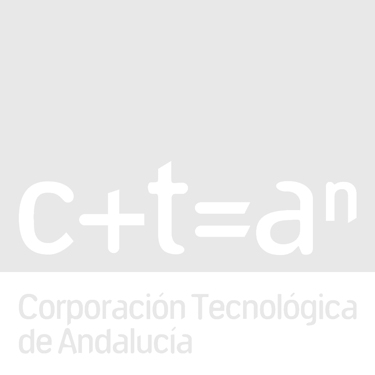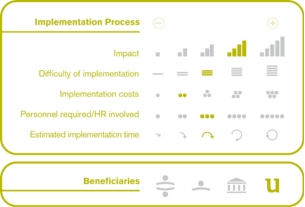5 - The management of intellectual property protection
5.3 - Implementing an integrated intellectual property management system
Introduction
Nowadays, intellectual property assets represent a key part of the core market value of large companies and organisations. An effective management system provides researchers and entrepreneurs with the necessary financial means and information to protect their research results, safeguard confidentiality and compile the information and know-how generated by their organisations. For this reason, we recommend the development of services and tools which help companies to successfully complete the process of protecting their research results, whilst assessing their patentability, and selecting the most appropriate form of protection. Equally, an intellectual property management system which is clear, standardised and well-documented should help to reduce administrative costs.
Examples
Eidgenössische Technische Hochschule Zürich (ETH Zürich, Switzerland)
For further information on ETH Zürich, see recommendations 3.5, 4.5, 4.6 and 7.1.
With approximately 50-100 patents approved every year, Zürich’s Technological Institute (ETH) offers researchers the following services:
- Analysing and evaluating of the patentability of an invention by working together with the researcher. Giving advice on existing types of protection and providing assistance in selecting those which are most appropriate for a given situation. They also offer help in finding holders of existing patents which could be of interest.
- Developing a patent strategy which puts the interested party in contact with a specialised lawyer who will develop the description of the characteristics of the invention and help with the legal issues.
- Offering assistance in seeking potential interested parties, together with advice on the negotiation of licences, know-how and computer programmes.
ETH Zürich is the primary owner of any intellectual property which has been developed by its own personnel. The patenting costs are assumed by ETH (who consequently claim the associated rights) assuming the following requirements are met: the invention is deemed to be worth patenting; based on the available information a patent can be attained; a potential market exists. ETH basically offers two ways of marketing protected results: either the researchers who develop the technology exploits it themselves by creating their own company (spinoff), or the rights are licensed to a third party for commercialisation. If the invention is the result of a joint project with a company, the specific terms and conditions are stipulated in the contract.
The MIT’s Technology Transfer Office (Technical Liaison Office, hereinafter TLO)
The MIT’s TLO is staffed by experts in technology licensing, business development and intellectual property. Its aim is to act as a knowledge transfer office for both the institute itself and the Lincoln Laboratories (research and development centres sponsored by the US Department of Defence). The TLO plays a significant role in licensing technology to start-ups and supporting the creation of new companies with long-term projects. The technology transfer process within the MIT is carried out through agreements whereby the institution allows third parties to exploit intellectual property for a particular purpose or in a specific geographical area.
The licences are granted to start-ups or existing companies, who pay a fee and are expected to produce the previously agreed results. The payments are shared out equally between the inventor, the research group to which the licence belongs and the MIT.
The MIT’s technology transfer process consists of 11 basic stages which are structured as follows:
- Research: The investigation process is instigated by researchers.
- Initial contact: An initial contact is made with the TLO to establish which process should be followed.
- Technological report: confidential document which is sent to the TLO.
- Evaluation: The TLO representative reviews the report, starts the patent searching process and analyses the technology and the market in order to determine the potential for commercialisation. This process defines the strategy which is to be followed, i.e. whether a technological development should be marketed under licence, or a start-up should be established using the technology as a basis.
- Protection: Initiation of the administrative processes associated with the protection of intellectual property, either through patents, copyright or registered trademarks.
- Marketing: Working with the inventor, the TLO identifies potential companies with the necessary experience, resources and business networks to facilitate the marketing of the technology. This may lead to agreements with companies or the creation of a start-up.
- Creating a start-up: The TLO offers assistance to inventors throughout the whole process of creating a start-up.
- Agreements with companies: The TLO provides the licensing documentation required to enter into agreements and finds ways of commercialising the technology.
- Licences: The processes which allow the MIT to license its technology to third parties. There are various different types of licences according to the invention’s specific needs.
- Commercialisation: Commercialisation of the technology by the company.
- Revenue: Distribution of the revenue to the different parties involved in the project.
Implementation process
Agents required for implementation
The services provided should not be very different from those offered by university transfer offices, although they are far more complex in terms of scope, structure and organisation.
Companies could perhaps exert influence on the universities to encourage them to provide a similar service, which would offer them better access to patents and their exploitation.
Research groups should also influence the universities in order to gain access to such services. Another possibility is to seek assistance from law firms specialising in intellectual property to help them with the organisation, management and maintenance of patents.
Sources
- http://www.vpf.ethz.ch/transfer/patente/index_EN - ETH Transfer Zürich.
- http://web.mit.edu/tlo/www/about/ - Technical Liason Offices - MIT.



